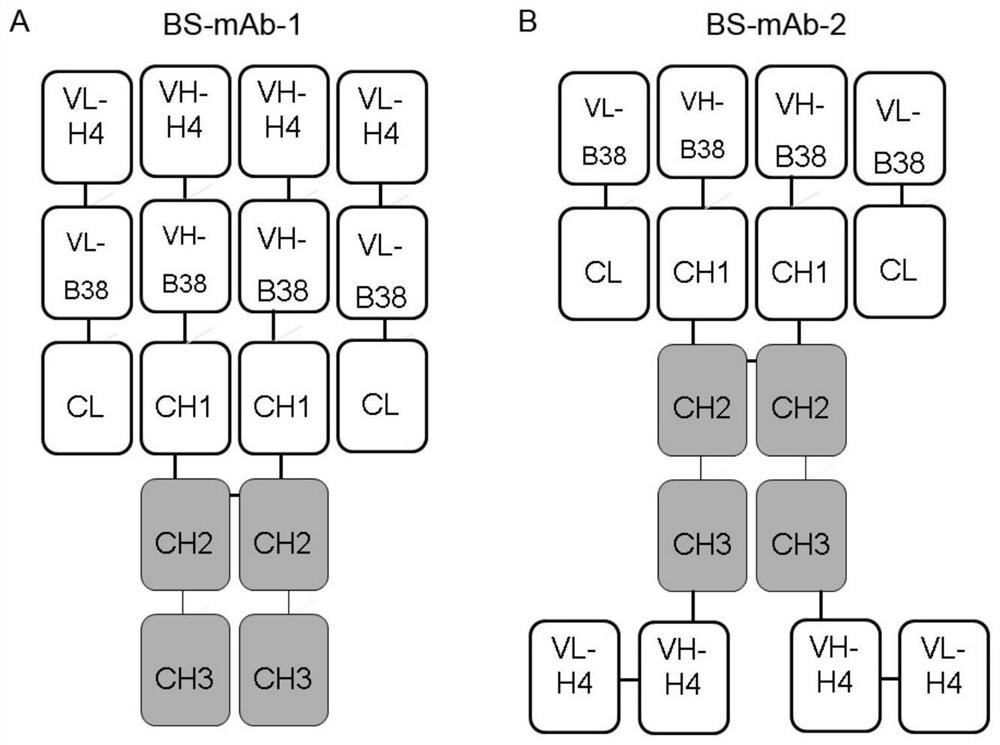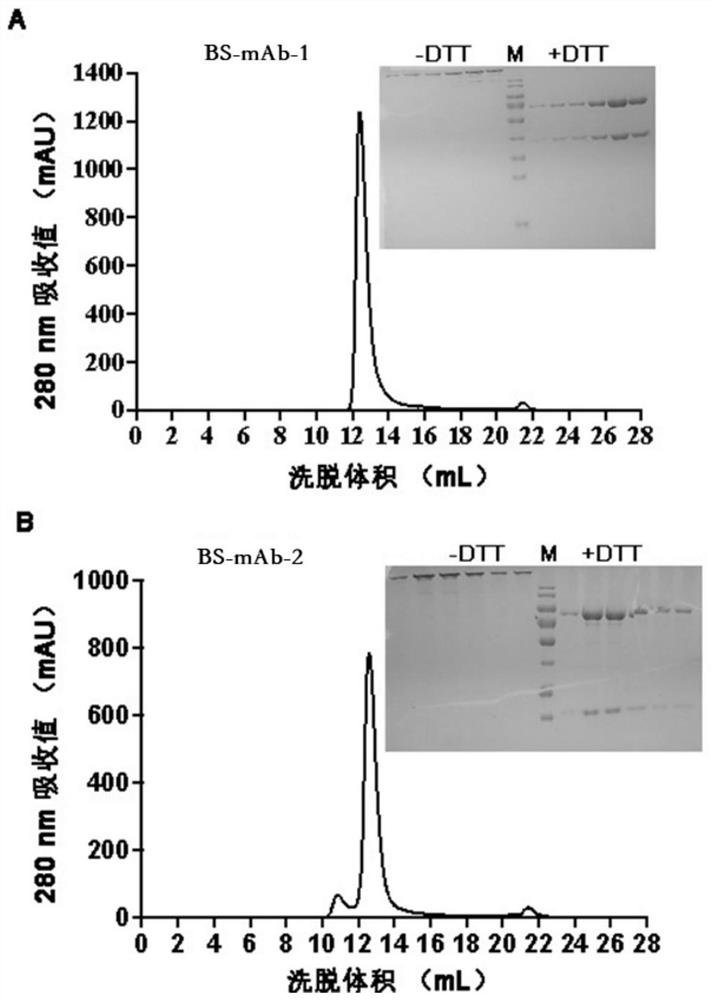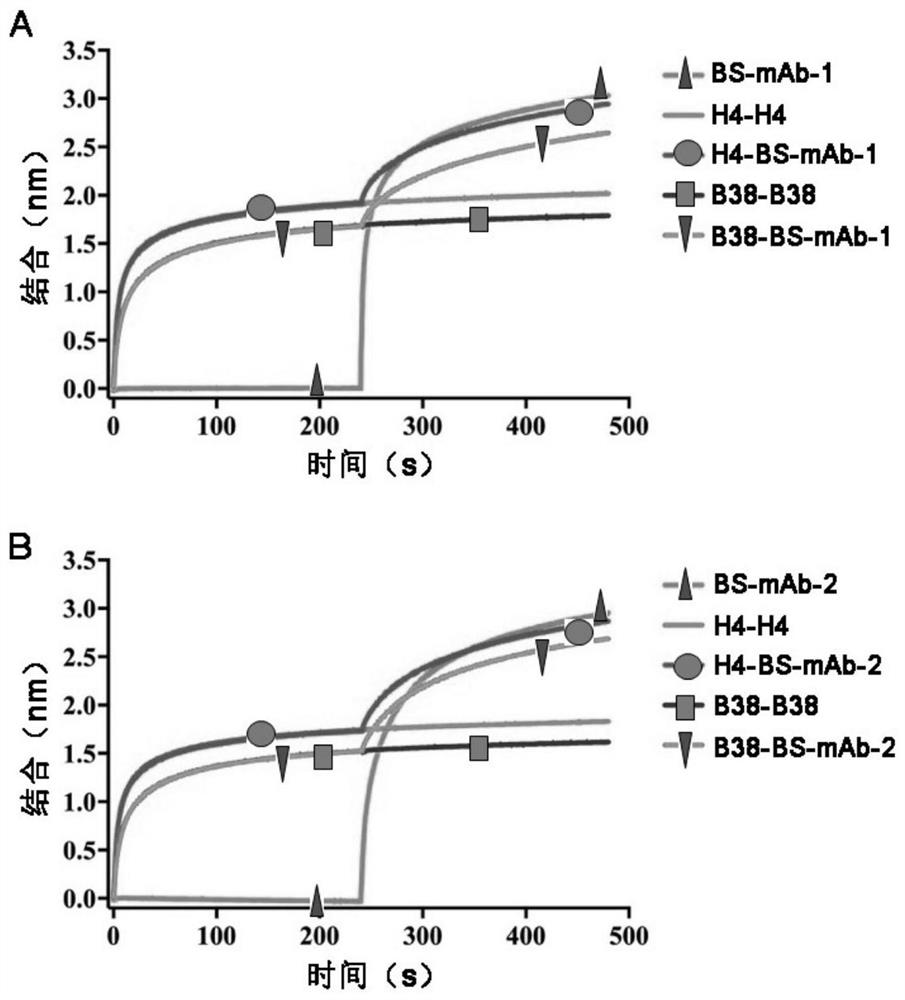Bispecific antibody for resisting novel coronavirus and application of bispecific antibody
A bispecific antibody, coronavirus technology, applied in the fields of biotechnology and immunology, can solve problems such as application limitations, and achieve the effect of improving selectivity and neutralizing activity, reducing difficulty and good stability
- Summary
- Abstract
- Description
- Claims
- Application Information
AI Technical Summary
Problems solved by technology
Method used
Image
Examples
Embodiment 1
[0079] Example 1 Bispecific antibody construction
[0080] In the construction of bispecific antibodies, the arrangement of the variable regions of the two antibodies will affect their ability to bind to antigens, and different constructions may lead to differences in antiviral activity. Therefore, whether the bispecific antibody constructed based on antibodies at two different sites can retain its dual-site binding activity and whether the antiviral activity can be improved still has great uncertainty. Bispecific antibodies are fusion proteins formed between antibodies with different structures. Antibodies with different structures bind to different antigens of two cells or different sites of the same antigen to exert different functions. In order to enable each antibody in the bispecific antibody to fully exert its respective functions, a large number of candidate bispecific antibodies were designed in this example in order to minimize the impact of the sequence and structur...
Embodiment 2
[0095] Example 2 Construction of Recombinant Expression of Bispecific Antibody and Purification of Protein Expression
[0096] In this example, two different bispecific antibodies, BS-mAb-1 and BS-mAb-2, were constructed based on the two novel coronavirus S antigen-specific antibodies H4 and B38, and their heavy chain amino acid sequences As shown in SEQ ID NO.2 and SEQ ID NO.6, its light chain amino acid sequence is shown in SEQ ID NO.4 and SEQ ID NO.8 respectively.
[0097] HEK293T cells (ATCC CRL-3216) were cultured in DMEM containing 10% FBS. HEK 293T cells were co-transfected with the above-mentioned recombinant expression vectors of BS-mAb-1 and BS-mAb-2, which respectively encode the heavy chain and light chain of the antibody. After 4-6 hours of transfection, the cell culture medium was replaced with serum-free DMEM, and the culture was continued for 3 days. The supernatant was collected, then supplemented with DMEM, continued to culture for 4 days, and then the supe...
Embodiment 3
[0099] Example 3 Evaluation of the two-site binding ability of BS-mAb-1 and BS-mAb-2 antibodies to the S protein RBD
[0100]In this example, the ForteBio Octet RED 96 biofilm layer surface interference technology was used to analyze the binding of the purified antibody to the S protein RBD, and to evaluate whether the BS-mAb-1 and BS-mAb-2 antibodies have two-site binding ability .
[0101] The S protein RBD (Science. 2020 Jun 12; 368(6496): 1274-1278) with a histidine tag was immobilized on the probe (Fortebio). In order to evaluate the two-site binding ability of BS-mAb-1 antibody, the probe immobilizing RBD protein was first combined with H4 antibody (Science. 2020 Jun 12; 368(6496):1274-1278) and allowed to saturate. Afterwards, BS-mAb-1 and equal concentration of H4 antibody mixture were passed through the H4 antibody to saturate the bound probe. The results showed that compared with the binding level of the H4-H4 antibody to the RBD, the RBD saturated with the H4 anti...
PUM
 Login to View More
Login to View More Abstract
Description
Claims
Application Information
 Login to View More
Login to View More - R&D
- Intellectual Property
- Life Sciences
- Materials
- Tech Scout
- Unparalleled Data Quality
- Higher Quality Content
- 60% Fewer Hallucinations
Browse by: Latest US Patents, China's latest patents, Technical Efficacy Thesaurus, Application Domain, Technology Topic, Popular Technical Reports.
© 2025 PatSnap. All rights reserved.Legal|Privacy policy|Modern Slavery Act Transparency Statement|Sitemap|About US| Contact US: help@patsnap.com



